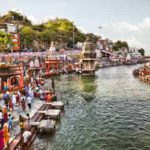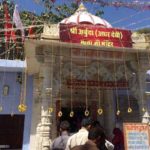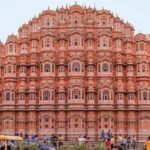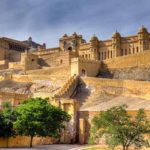12 Best Places to Visit in India in March, the beginning of spring is one of the most beautiful times to make arrangements to travel in India. The fun and comfortable weather of March makes it one of the best times to visit India. The best places to visit in India in March include Goa, Jaipur, Wayanad, etc. They are those who mix the beach, adventure, heritage, romance, and discovery of hill stations. There is a destination to suit all your moods, no matter where your interest lies. By participating in the celebration of Holi, the festival of colours and love, the best way to start your holidays in India in March is. Besides, during this period, Goa also hosts the popular Shigmo Festival.
As people meet their loved ones, splash colours and water, try sweets and cannabis in the beverage, the experience is wet. The festivities take place all over the world, but Rajasthan’s royal Holi and Uttar Pradesh’s Lathmar Holi have their own charm. Besides, Rishikesh adds more fun to the festivities with the World Yoga Festival, Jaipur’s Elephant Festival, and Velas Turtle Festival in Ratnagiri.
This isn’t where the March list of places to visit comes to an end. As the season is a perfect time to set your foot on a journey to destinations that during summers are sometimes missed. The peaceful weather provides great opportunities to discover the history and heritage of India if you love connecting your soul to historical marvels. Choose from warm places in India like Delhi, Agra and Jaipur to visit in March, as there are some of the best UNESCO sites waiting for your presence.
Searching on the way to India for wildlife adventures? Enter the enthusiasts’ party visiting Wayanad in Kerala, Jim Corbett in Uttarakhand, Kaziranga National Park in Assam and Madhya Pradesh’s Panna National Park. If you are planning a family holiday in March, the fun doubles, as India has a lot in store for you all. Shillong, Kodaikanal, the serene Lakshadweep, are the ideal tourist spots to explore and enjoy with your crew. You will not only do enjoyable things such as watching waterfalls and valleys, but visit the zoo and museums as well, 12 Best Places to Visit in India in March.

Delhi
Delhi is passion, Delhi is haste, Delhi is peace, Delhi is turmoil, its own yin is the yang. Delhi is an all-round deal! Delhi makes a full circle of life from the busy lanes of Chandni Chowk to the serene and peaceful abode of Bangla Sahib. The city has been thriving because of the abundant diversity and is one of the most popular tourist destinations in India. The romance with the city starts right after walking out of New Delhi Railway Station. Known for its rich heritage and spiritual past, a great number of religious tours are drawn to Delhi. Delhi has become a major religious tourist destination for places such as Jama Masjid, Hazrat Nizamuddin Dargah, Akshardham, Gurudwara Bangla Sahib and Cathedral Church. The great thing about these religious places is that they are accessible to all faithful individuals. Delhi, the heart of India, is called the City of Heartful People, and with its hospitality, it actually justifies it. The town’s first encounter may be chaotic and unorganised, but inside this unorganised chaos lies a beauty.
Travellers who have already visited this city claim that getting lost in it is the perfect way to discover it. One of the toughest tasks with tourist places spread all over is to sort out the mystery as to which destinations should be on your itinerary. Yeah, in one-day Delhi sightseeing, it’s not possible to cover all tourist attractions, it will probably be short for a lifetime to explore and uncover all the hidden secrets of this ancient city, but you can’t skip any of the must-visit locations. The best thing about Delhi is that it welcomes all from backpackers to luxury trips to family holidays.
Not many destinations can be put as a family holiday destination in India, but Delhi is one of the few destinations in India that is equally enjoyable for kids as well. Some of the most child-friendly attractions in Delhi and near the capital region are tourist destinations like Appu Ghar, Worlds of Wonder and Adventure Island. If your child is looking for educational events, as an alternative to kid-friendly destinations, Delhi offers the National Science Center and Shankar Doll Museum. A city sightseeing tour will take you to most of Delhi’s tourist attractions, including UNESCO World Heritage sites, Delhi museums, local markets, spiritual sites, but the best way to explore this city is on your own.
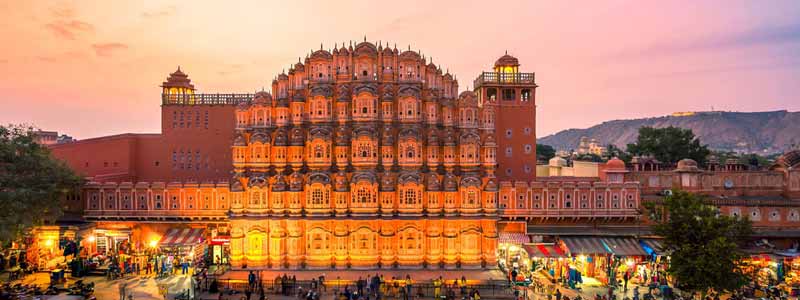
Jaipur
Jaipur is the capital of Rajasthan, the largest Indian state situated in the North-Western region of India, known as the Pink City. The vibrant city of Jaipur, one of India’s top tourist destinations, is a prime tourist attraction because of its impressive royal heritage as well as its colourful culture and traditions. The town is located on the outskirts of the Thar Desert, about 280 km from Delhi, the national capital of India, and is surrounded by the hilly terrain of the Aravali range. In its distinguished character, which is the perfect combination of quaint and contemporary architecture, culture and customs, lies the beauty of Jaipur. The city is a showcase of majestic, ageless forts and palaces, picturesque local markets, new colonies, busy malls and food courts.
The city of Jaipur was founded in 1727 by King Jai Singh II as one of the important cities of the mediaeval period. In 1699 and 1744, when he moved the capital from Amer to Jaipur to satisfy the increasing population, Jai Singh II was the ruler of Amer. The primary reason for shifting the capital was the lack of water in the Amer, which is situated about 11 km from the city of Jaipur. Following a long study of architecture and Vastushastra, the architecture of the city of Jaipur was created and then the building of the city began in 1726 and finished after four years. Within four years, the palaces, royal offices, main roads and gates of entry were built. The city was divided into nine blocks, two blocks of which are the royal blocks that comprise the palaces, state buildings and offices, while the public was allocated the remaining seven blocks. The seven huge gates were also designed for entry into the city of Jaipur.
The city was named after King Maharaja Jai Singh II. During the reign of King Sawai Ram Singh I in the year 1876, the buildings of the city of Jaipur were coloured in the pink colour to welcome the Prince of Wales. Later, the distinct pink colour of the entire city became the name of the city of Jaipur, known as India’s pink city. In addition to the famous temples such as Birla Mandir, Garh Ganesh Temple, Galtaji Temple, Govind Dev Ji Temple, Moti Dungri Ganesh Temple and Sanghiji Jain Temple, Jaipur’s major tourist attractions are the Jantar Mantar Observatory, Amber Fort, Jaigarh Fort, Nahargarh Fort, Hawa Mahal, Jal Mahal and City Palace. Jaipur’s UNESCO world heritage sites are the Amber Fort and the Jantar Mantar. The prestige and bravery of the rulers of the Kingdom of Jaipur are testament to the grandeur of the forts and palaces.
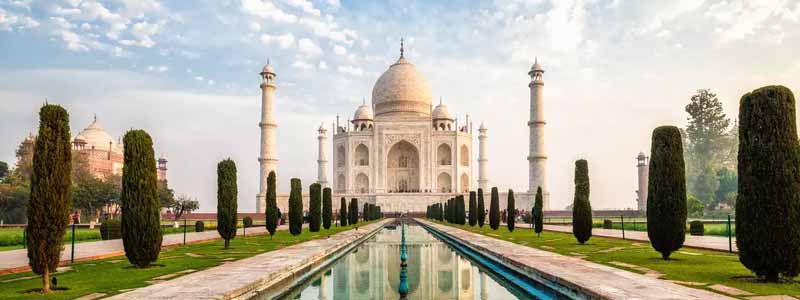
Agra
As the City of the Taj, Agra was immortalised. It doesn’t take long for the roving eye, however to discover that Agra has more than just the fabled Taj Mahal. The city is a virtual portal to the discovery world… A freeze-frame from a sparkling period that has long since passed by. The area of Agra is identified as ‘Agraban’ in the great epic ‘Mahabharat’ (an integral part of the Braj Bhumi or the land of Lord Krishna). The root of Agra in 1475 A.D., the reign of Raja Badal Singh, is outlined in the latter part of Indian history.
During the rule of the Afghan King, Sikandar Lodhi, who had made it the capital of his kingdom, Agra came to the fore. The Mughal Emperor Babar later took on the challenge of making Agra, a distinctive character and beauty of his own, in 1526 A.D.The visionary that he was and great patron of the arts, Emperor Babar brought about a shift in the culture and life-style among the people of Agra, which then brought forth some of the finest craftsmen, musicians, statesmen, warriors and aristocracy, this part of India had ever witnessed, The golden age of Agra’s history, thus began to set in. The next few hundred years of Agra saw the rise of the pomp and pageantry of the three great Mughal monarchs, Emperor Akbar, Jahangir and ShahJahan, all of whom lavished their love and wealth enormously on this fabled city to turn the land into one of the great art, music, learning and trade centres.
Most of the remarkable past life of the city is a witness to the majesty of the buildings, the beautiful arts and crafts and not to forget, the attraction of excellent cuisine…. Both of them, loved as invaluable legacies of a nostalgic past. Most of its glorious past has been impressively preserved by the older city of Agra…… captivating every tourist with fond memories to carry home. Today, adjacent to tradition, luxury and modern comfort also exist: luxury hotels, shopping malls and plazas, broad avenues and a superb choice of leisure, industry, sports, pleasure, education and arts venues, 12 Best Places to Visit in India in March.
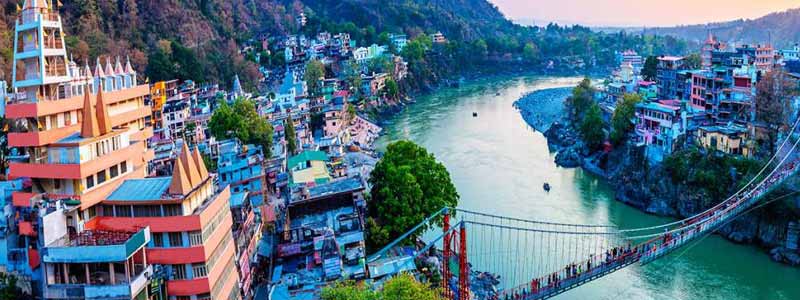
Rishikesh
Rishikesh is sometimes referred to as the ‘Yoga Capital of the World’ as the most peaceful place in northern Uttarakhand, surrounded by hills and bisected by the wide and sluggish Ganges. Rishikesh acquired instant fame as the location where the Beatles came to stay with their guru, the Maharishi Mahesh Yogi, back in the 1960s. It is an exceptional place to meditate and learn yoga. Rishikesh is also a fine starting point for treks to Himalayan pilgrimage centres such as Badrinath, Kedarnath, Gangotritri, Laxman Jhula, Yamnotri. It is rightly referred to as the gateway to the Badrinath, Kedarnath, Gangotri and Yamunotri Himalayan Shrines. 7 Story Temple At the confluence of Chandrabhaga and Ganga, situated 24 km upstream from Haridwar,
Rishikesh has been a spiritual centre for a long time. The sage Raibhya Rishi is said to have done extreme penance here and God appeared to him in the form of Hrishikesh as a reward, hence the name. There are numerous ashrams in Rishikesh, several of which are known internationally as centres of philosophical studies, yoga and meditation. An international yoga week is organised here every year between 2 and 7 February by Uttarakhand Tourism. There are opportunities for white water rafting on the Ganga for the adventurous. The climate here is continental in nature, but its location in the foot hills provides it with a nice year-round climate. Any time of the year, one can visit Rishikesh.
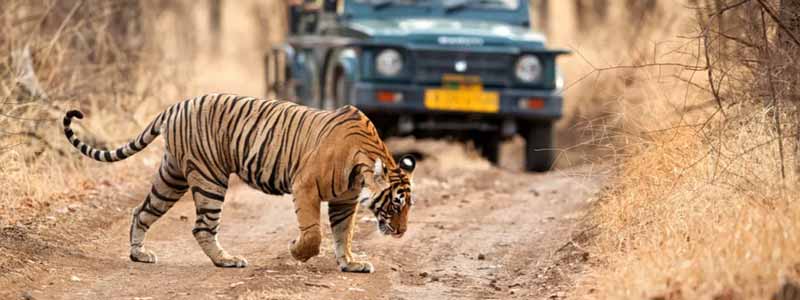
Ranthambore
Talking about the places to visit in Ranthambore, some of the most beautiful tourist destinations in the world will be given here. Places such as Ranthambore Fort, renowned for its complex architecture, and the Rajiv Gandhi Regional Museum, known for its ancient antique and craft collections, have drawn tourist flocks. Some landmarks, such as Kachida Valley and Ranthambore National Park, in addition to these sites, Offering visitors a much-needed natural hidepot away from the town’s monotonous existence.
Various wildlife lovers and nature lovers are attracted to their rich variety of flora and fauna by the tourist places to visit in Ranthambore. By visiting the popular Ranthambore tiger reserve, in their natural habitat, one will be able to see Royal Bengal tigers, wild bears, and boars. One of Ranthambore’s key highlights is its fort, which is home to some of the beautiful royal palaces, former rulers’ ruins, adventure sports, and many other amazing things.
You can also indulge in lots of adventure activities available in these places to visit near Ranthambore, apart from just sightseeing. You will also get a chance to try your hands on various adventures such as picnics and excursion tours with your loved ones to Jogi Mahal, Raj Bagh Ruins, etc., providing you with the much needed thrill on your journey.
Shillong
The capital of Meghalaya, Shillong, is the headquarters of the East Khasi Hills District. Among other cities in India, it is one of the cleanest cities and it is often referred to as the ‘Scotland of the East’ because of its rolling hills around the city that are close to the Scottish Highlands. Shillong’s rolling hills and landscape is a constant source of attraction for visitors, surrounded and lying between the cradle of tall coniferous pinewood trees and pineapple shrubs Which has boosted Shillong Tourism a lot in the end. It perches at an altitude of 1496 m above sea level, with Shillong Peak at 1966 m as the highest point.
Shillong is home to a number of waterfalls and bodies of water and is situated on a plateau surrounded by Diengiei Hills at a rising height of 1823 m on the northwest and Umiam Gorge on the north. The majestic mountain peaks, pure crystal rivers, stunning golf courses and the mesmerising landscapes are among the main reasons for improving Shillong tourism and tourists visiting Shillong. Shillong also serves as the gateway to Meghalaya, renowned for its heavy rainfall, highest waterfall, lakes, amazing people and culture. Also famous as the music capital of India, Shillong is, As many excellent artists hailed from state festivals and other music festivals continue to take place during the year, 12 Best Places to Visit in India in March.
Varanasi
One of the oldest living cities in the world is Varanasi, or Benaras, (also known as Kashi). Varanasi’s prominence is practically unrevealed in Hindu mythology. Benaras is older than history, older than tradition, older even than legend and looks twice as old as all of them put together,” wrote Mark Twain, the English author and literature enthralled by the legend and sanctity of Benaras.” ”
For Hindus for centuries, the land of Varanasi (Kashi) has been the ultimate pilgrimage spot. Hindus believe that redemption and liberation from the cycle of birth and re-birth will be attained by one who is graced to die on the land of Varanasi. The origins of Varanasi, the abode of Lord Shiva and Parvati, are still uncertain. It is thought that the Ganges in Varanasi have the ability to wash away the sins of mortals.
In the tresses of Lord Shiva, the Ganges is said to have its source and in Varanasi, it expands to the mighty river we know of. For over 3000 years the city has been a centre of learning and civilisation. Varanasi was a sign of the Hindu Revival, with Sarnath, the place where Buddha preached his first sermon after the Enlightenment, just 10 km away. For centuries here, knowledge, religion, culture, devotion to gods, Indian arts and crafts have all flourished. Varanasi, also a pilgrimage site for Jains, is considered to be the birthplace of Parsvanath, the twenty-third Tirthankar.
Vaishnavism and Shaivism co-existed harmoniously in Varanasi. Mrs. Annie Besant chose Varanasi as the home for her ‘Theosophical Society’ and Pandit Madan Mohan Malviya, with a number of temples, to institute ‘Benares Hindu University, Asia’s largest university. It is said that Ayurveda originated in Varanasi and is believed to be the foundation of modern medical sciences, such as plastic surgery, cataract and calculus operations. The preceptor of Ayurveda and Yoga, Maharshi Patanjali, was also associated with Varanasi, the holy city. Varanasi is also renowned for its trade and commerce, particularly since the early days for its finest silks and gold and silver brocades.
Mount Abu
In the parched desert of Rajasthan, Mount Abu is like a breath of fresh air. It is located 1,722 metres above sea level, the only hill station in Rajasthan, and is situated on the highest point of the Aravallis range amidst the lush green hills. Back when the Maharajas reigned, it used to be a favourite leisure destination of the ruling royal family. Posh homes, which are a combination of British-style bungalows and royal holiday lodges, are a striking feature of Mount Abu, Share room with the rustic homes of different forest-dwelling tribal groups.
This quaint hill station possesses great scenic beauty and is home to lakes, waterfalls and lush forests. Blossoming flowers and trees that are native to this area can also be enjoyed. Mount Abu also houses a sanctuary where animals like langur, sambar, wild boar and leopards can be seen. There are many religious monuments on Mount Abu, the most prominent being the Dilwara temple, Brahmakumari Ashram, Guru Shikhar and the Jainism shrines. Not only is this hill station a quiet and beauty-laden getaway, but a perfect location for a religious pilgrimage as well.
Kashmir
Kashmir attracts the interest of visitors from all over the globe in the union territory of Jammu & Kashmir. With tranquil surroundings, spectacular views, and pristine nature, Kashmir is a great holiday destination that should be visited once in a lifetime.
Kashmir is a perfect destination in India for planning a family tour and a honeymoon trip. In Kashmir, the picturesque Gulmarg, Srinagar, Pahalgam or Sonmarg make a family holiday or honeymoon a wonderful experience. Kashmir is also home to the famous Amarnath Cave from all over the world, which calls the ardent devotees Lord Shiva.
Though Srinagar’s beautiful Dal and Nigeen lakes offer an opportunity to enjoy a houseboat stay and enjoy a Shikara Trip, the alpine lakes such as Tarsar Marsar, Vishnasar, Gadsar Lakes call for the best trekking experience for adventure lovers. Nothing can beat the experience of skiing in Gulmarg during the winter season for more adrenaline-pumping adventure.
We provide the best information on the must-visit destinations, things to do where to stay, the best time to visit, affordable Kashmir tour packages, and other aspects of Kashmir Tourism in our Kashmir Travel Guide. Your days in Kashmir with us will be unforgettable.
Sikkim
Sikkim is an Indian state in the North East of the nation. Chinese Tibet in the North, Nepal in the West, the Indian State of West Bengal in the South and Bhutan in the East are the Himalayan State Boarders. It is one of India’s smallest states and has a population of just over 6,00,000 people. The principal industry in the state is tourism. In fact, the state’s annual tourist influx has exceeded the state’s population.
For its quiet existence and simplicity, the state is legendary. In addition to a diverse ethnic mix of people with a rich cultural heritage, the mountain state, famous for Kanchenjunga, the third highest mountain in the world at 8586m, offers a tremendous variety of plants and wildlife.
Khajuraho
In Chhatarpur district, Madhya Pradesh, India, about 175 kilometres (109 mi) southeast of Jhansi, the Khajuraho Group of Monuments is a group of Hindu temples and Jain temples. They are a World Heritage site by UNESCO. The temples are famous for their architectural symbolism of the nagara-style and their erotic sculptures.
Most Khajuraho temples were constructed by the Chandela dynasty between 950 and 1050. Historical records state that by the 12th century, the Khajuraho temple site had 85 temples, spread over 20 square kilometres, of which only about 25 temples, spread over six square kilometres, survived. The Kandariya Mahadeva Temple is adorned with a profusion of sculptures with intricate details, symbolism and expressiveness of ancient Indian art from the surviving temples.
Together the Khajuraho group of temples were founded but were dedicated to two religions, Hinduism and Jainism, indicating a history of acceptance and reverence among Hindus and Jains in the area for diverse religious views.
Amritsar
The holy building significant to the Sikhs, the Golden Temple, has a legacy associated with it. The Amrit Sarovar or nectar pool has long been synonymous with Indian legends, and the Ramayana was supposedly taught here to the twin sons of Lord Rama. There are several tales of how the land was purchased for the building of the temple. Some believe it was purchased by the Guru, others suggest it was given by Emperor Akbar. Whatever the storey, it is clear that the religious system essential to the Sikhs was based on a free income.
Oral tradition dictates that at the behest of the fifth Sikh Guru Arjan Dev, the Muslim Divine Pir Mian Mir of Lahore laid the foundation stone of the temple. There is no record, however that supports this, not even in the biographies of Pir. The documented account says that the foundation was laid in 1588 by Guru Arjun Dev. The followers of the Guru settled in the neighbourhood and a small town called Ramdaspur soon arose, deriving its later name, Amritsar, from the sacred tank surrounding Hari Mandir, or Darbar Sahib, now known as the Golden Temple.
As the followers of Sikhism grew in number, the flourishing town which grew around the temple during the lifetime of Guru Arjan Dev grew further in stature. Things rapidly moved. Ranjit Singh, the first Sikh Maharaja, made Amritsar his spiritual capital, while Lahore was the temporary seat of his newly created, expanding empire. The further construction of the temple was supervised by Ranjit Singh, who gilded the embossed plates, renovated the pietra dura and embellished the interior with floral, mirrored ceilings.
Not only is the Golden Temple a religious building significant to the Sikhs, it is an eclectic monument that has developed as much of the dedication of people as of the skills of the guild craftsmen to become the Sikh religious sites’ Sikmost sacred. Generation after generation has lavished praise on the golden temple’s art and architecture and it is widely regarded as one of the most tastefully decorated shrines anywhere.



